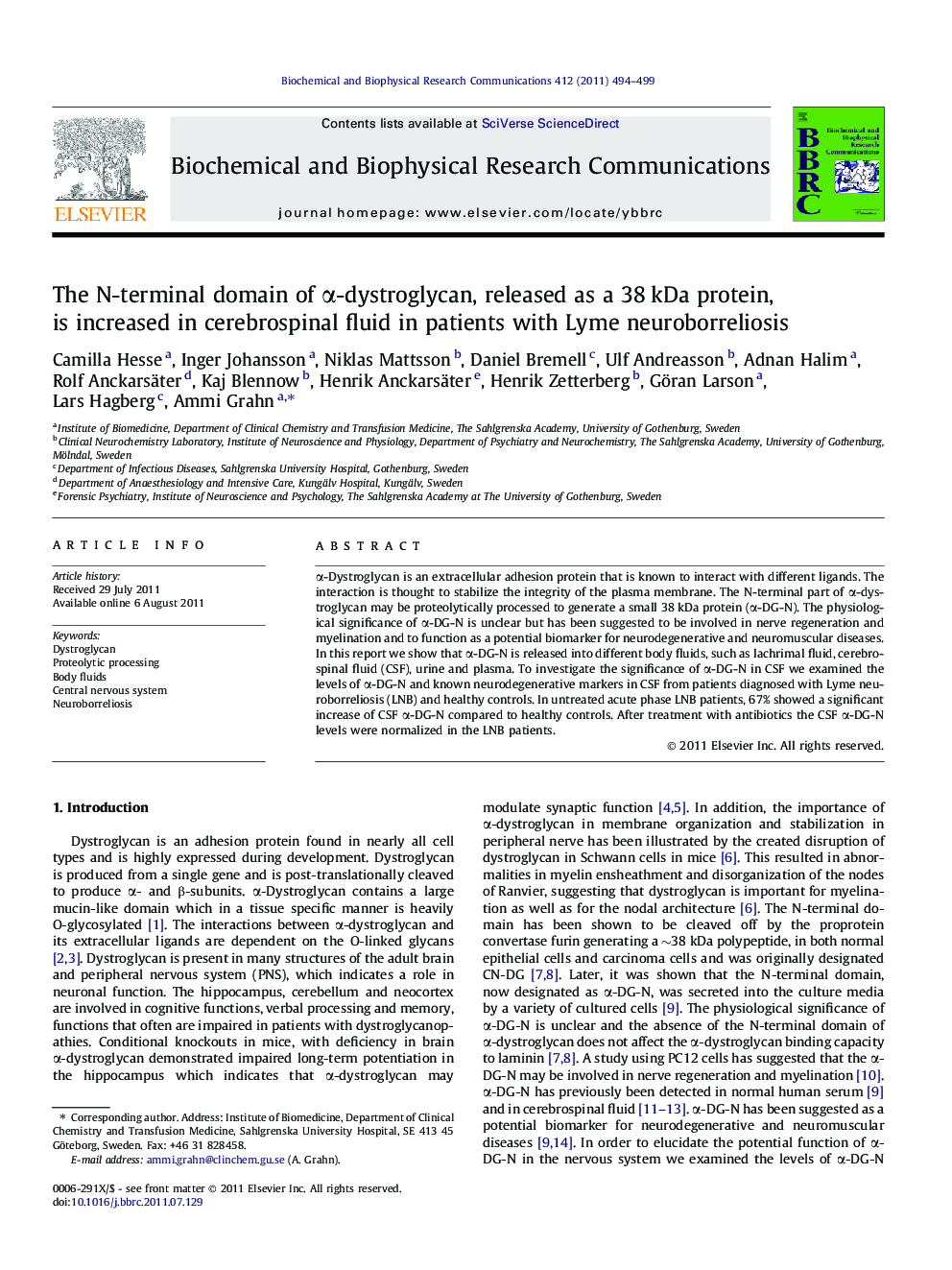| Article ID | Journal | Published Year | Pages | File Type |
|---|---|---|---|---|
| 1930389 | Biochemical and Biophysical Research Communications | 2011 | 6 Pages |
α-Dystroglycan is an extracellular adhesion protein that is known to interact with different ligands. The interaction is thought to stabilize the integrity of the plasma membrane. The N-terminal part of α-dystroglycan may be proteolytically processed to generate a small 38 kDa protein (α-DG-N). The physiological significance of α-DG-N is unclear but has been suggested to be involved in nerve regeneration and myelination and to function as a potential biomarker for neurodegenerative and neuromuscular diseases. In this report we show that α-DG-N is released into different body fluids, such as lachrimal fluid, cerebrospinal fluid (CSF), urine and plasma. To investigate the significance of α-DG-N in CSF we examined the levels of α-DG-N and known neurodegenerative markers in CSF from patients diagnosed with Lyme neuroborreliosis (LNB) and healthy controls. In untreated acute phase LNB patients, 67% showed a significant increase of CSF α-DG-N compared to healthy controls. After treatment with antibiotics the CSF α-DG-N levels were normalized in the LNB patients.
► α-DG-N is released into different body fluids, such as lachrimal fluid, cerebrospinal fluid (CSF), urine and plasma. ► The CSF α-DG-N levels is low in healthy individuals. ► The CSF α-DG-N levels was significant increase in untreated Lyme neuroborreliosis patients.
